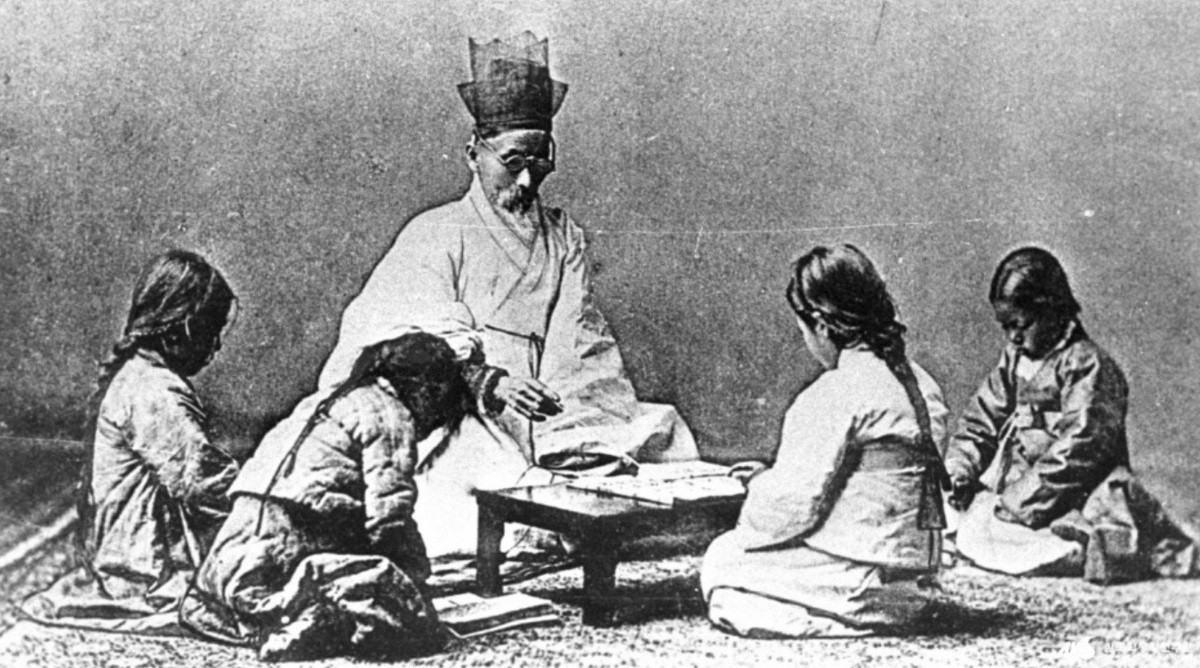
The emerging national conscience in ancient Japan
Institutions, society and culture
Usually, the concept of national conscience is strictly related to nineteenth century Europe, when almost all citizens stood up for their rights and considered themselves part of a unitary national culture. This type of doctrine was completely unknown to ancient Japan but this does not imply the absence of any historical conscience. By analyzing important aspects of the Japanese social order and the way of life in the Asuka and Nara jidai, we can conclude that a clear national identity developed in the minds of the aristocracy at the end of the eighth century AD, together with an original idea of statehood and a genuine philosophical perspective. Although only the elite completely shared these values, they were derived from the archaic mentalities, habits and beliefs of the Japanese common people. ... Identifying some distinct features of the society at a national level also enforced the general thesis. After starting from a very diverse ethnic and cultural background, and sitting for centuries in the shadow of the remarkable Chinese accomplishments, the Japanese civilization was finally rising. The most relevant authors that helped us to understand this complex topic were: Torao Toshiya, William Wayne Farris, Edwin A. Cranston and Delmer M. Brown.read more
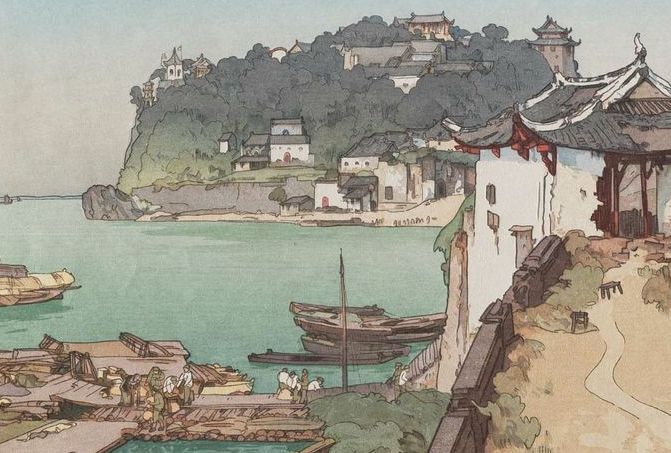
1 of 7
The tremendous spiritual influence of China was vital for the augmentation of the high culture of Japan. Edwin A. Cranston, a leading expert in Asian languages, analyzed the transition between borrowing foreign elements and producing original works of art in the Japanese culture. Speaking about the Asuka and Nara jidai, Cranston summarizes the main features of this conversion. ‘Japan became fully and for all time a participant in the high civilization of East Asia. Participation meant religious and philosophical orientations, an ideal of imperial rule, legal and administrative structures, techniques and styles of architecture, city planning, sculpture, painting, and music - all derived directly or indirectly from China and shared in one degree or another by the peoples of its periphery. Above all, it meant literacy: the mastery of the Chinese language and the eventual adaptation of its script to the writing in Japanese. From literacy came ventures in historiography - at once a definition and a redefinition of the Japanese state - and in poetry.’
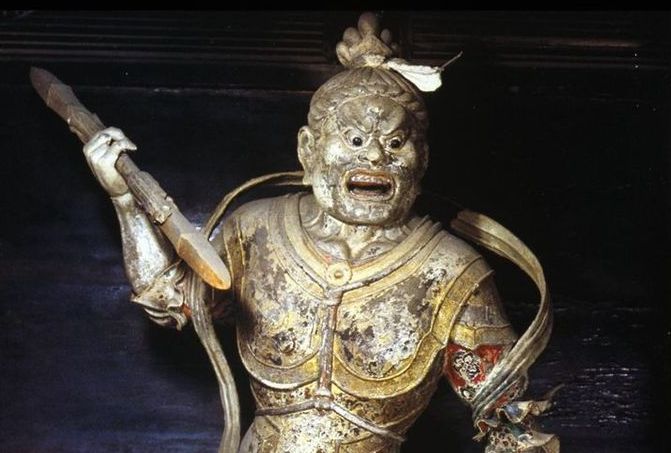
2 of 7
The basic assumption in this chapter is that a deep analysis of the Asuka and Nara eras reveals the complicated process at the end of which the mature Japanese civilization was born. Although overused in many ways, the Hegelian concept of dialectics is essential in order to fully grasp the dynamic process of change. Put simply, dialectics means a dialogue between at least two opposite subjective positions. At first, a thesis is formed. In response, an antithesis denies all the former claims. Finally, from this debate a conclusion as objective as possible is made in the form of a synthesis. In reality, the Japanese ethnogenesis is much more complicated than that, but the general framework can be better understood in this way.

3 of 7
Even before Classical Antiquity, a very rich and vivid native culture existed in the archipelago, but it was unrefined and wild, dominated by a series of spontaneous popular expressions. The social hierarchy was clear but simple, and the political organization was quite complicated, but the central authority was weak, and not nearly as elegant, efficient and robust as the one that emerged during the seventh and eighth century AD. Without the benefits of natural resources and large areas of productive land to farm, the incipient Japanese statality was lagging behind neighboring societies that were well structured and more powerful from a technological, economic and military point of view. The great political change was driven by this sense of insecurity. It was coordinated by the elite that forced those social innovations on the common people. The only pragmatic way to implement political reforms was to corroborate and legitimize them with religious and cultural imports, since the neighboring art of governance developed alongside and with the help of a spiritual, artistic and intellectual framework. It was also a good way to integrate Japan into the geopolitical sphere of East Asia.
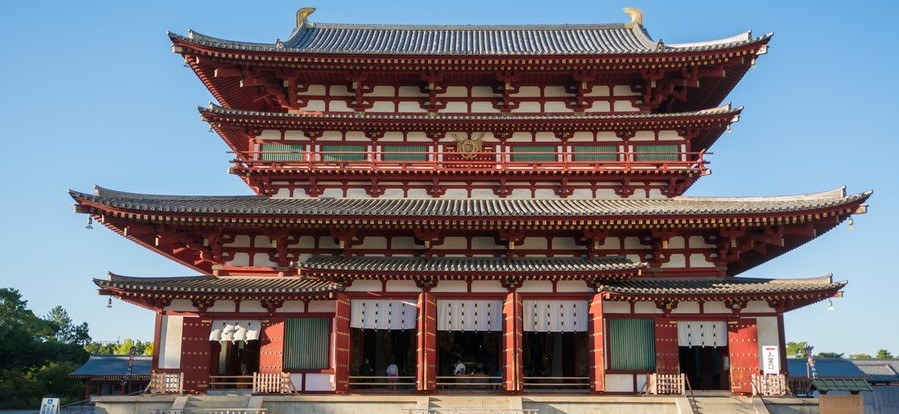
4 of 7
The fear of not being overwhelmed is a necessary explanation for the will to adapt to new conditions, but not a sufficient one. Up to a point, the political and social reforms were dictated from the top of the social ladder. On the other hand, this didn’t happen with the new cultural and religious worldviews. Insecurity alone cannot explain why the Confucian and Buddhist dogma and philosophy of life, reinforced by all the artistic forms derived from it, had such a profound and deep impact on Japanese society as a whole. The only reasonable answer to that question is that the Japanese people were sincerely fascinated by many foreign habitudes, and on a macro level, the phase of the thesis had begun. This modernization is often compared by historians with the Meiji era, when Japan adopted Western ways. The difference between the two is that the second was a revolution mostly manufactured from necessity, while the ancient set of reforms were set in motion principally out of admiration.
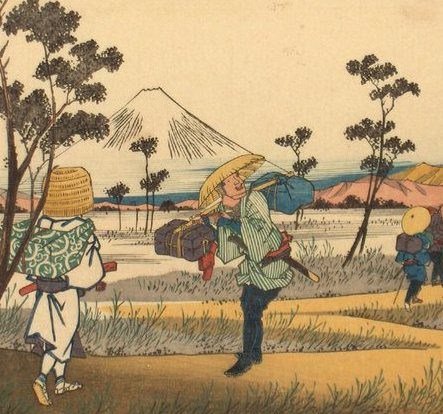
5 of 7
From the very beginning, numerous transformations were received with discontent and resistance. Some influential local nobles openly opposed the transfer of political power towards an aristocratic court seated in a capital city. The Buddhist doctrine was comprehensive only at a superficial level and several clan chieftains felt that they would lose their authority if they abandoned some of their religious prerogatives. It was also argued that building monasteries and sacred monuments might anger the native kami, bringing chaos and destruction. Thus, a social tension between the indigenous Japanese nobles and those of Chinese and Korean descent was created. As for Taoist, Confucian and Buddhist notions and practices, they were gradually embraced only by a small minority of elites. At least for the first decades, the rural areas kept their old traditions and were reluctant to receive any alien form of mysticism. Peasants were accustomed to larger local autonomy granted by their traditional lords, and the tax pressure increased significantly. The disparity between the people and the ruling elite was accentuated by the increasing control and interference of the state in the daily lives of farmers. Most of them obeyed the new imposed order but also responded with passive methods of disruption and bypassed the system in any way that they could. Asuka and Nara were marked by this constant struggle of opposing ideas and mentalities. In practice, the antithesis happened in parallel with the thesis. The result of their confrontation is presented during this article.
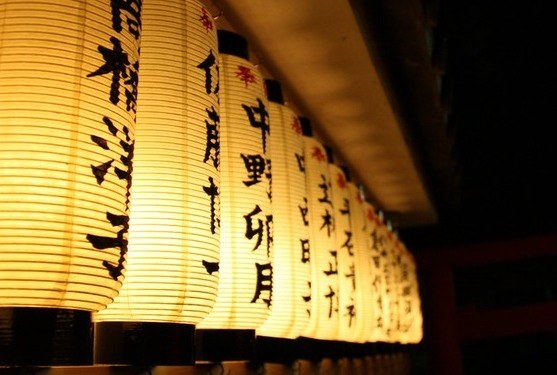
6 of 7
We’ve already mentioned terms like ethnogenesis, a limited common or national identity, and historical consciousness as a lively force of spiritual and material transition towards self awareness. Throughout this text, we will try to identify and sketch the main characteristics of this phenomenon. Still, we first need to define the implication of the mechanism. An explanation of what are we searching for exactly is paramount. Ethnogenesis implies the apparition of a unitary written language with an enduring system of grammar. No less significant is that historical consciousness should be represented with clarity in the oral and high culture, in art and official written sources. This basically means the recognition of repeated common themes that have a national value and connotation. The pattern can be found in religion, poetry, prose, music, dance, folk tales, painting, architecture and state archives. Political institutions have to be strong, being established as a synthetic reflection of the natural expressiveness of that culture. Here the official cult of nationwide heroes, values and virtues that can spread and communicate with the countryside is fundamental for our thesis. It is also important that the society perceives itself as a different nation, having a sovereign state, sometimes with an original political and social configuration, a distinctive worldview, a clear set of religious and spiritual beliefs, and specific daily habits and mentalities. This happens in three coexisting forms: the neighboring countries recognize your existence as an independent state, the people spontaneously define themselves as a separate community from the rest of the world, or the political and cultural elite introduces this shared identity to the masses by using various means of propaganda. The third one is much more pregnant and efficient starting from the nineteenth century. In our particular case, the geographical isolation of Japan increased the feeling of ‘otherness’ and cultural uniqueness. It is important to comprehend all of those revolutions in their liquid form, to express the historical process as a continuous movement, and not as a static and robotic linear evolution.
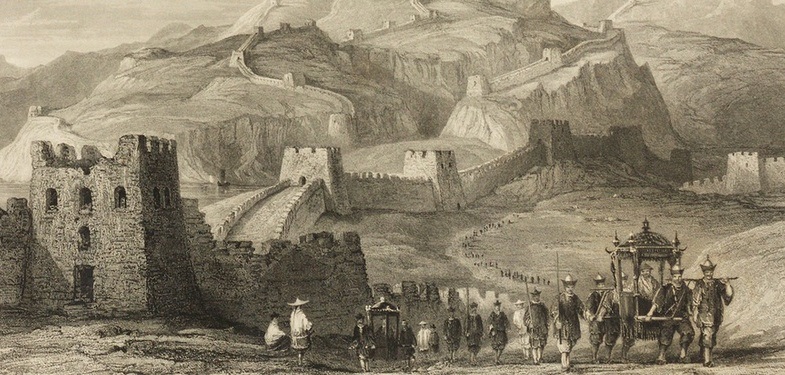
7 of 7
The dramatic prologue of Japan’s history began when the Chinese Han dynasty mentioned the existence of an island country named ‘Wa’. The Chinese scribes described the existence of hundreds of barbaric tribes and kingdoms that had some general common traits, but also many different local customs. Far from expressing the existence of a unitary nation, ‘Wa’ was just a collective term for the populations living in the archipelago. By the fifth century AD, from all of those chiefdoms, the Yamato kingdom managed to impose its will from its power center, the Kinai province. One hundred years later, even the Sui dynasty acknowledged that the Yamato was entitled to some influence in the Korean Peninsula. However, its military power was limited and the actual internal political authority was fragile. Practically, Yamato was a kingdom that depended on a federation of vassal chieftains. Outside the surrounding regions of the capital, the control of the rest of the country was conditioned by the goodwill of the local gentry. Another step forward was made by Prince Shotoku in 607 AD, who wrote a letter to the Sui dynasty, speaking, for the first time, in the name of the sovereign Japanese state and announcing the cessation of any kind of payment of tribute to China. Again, Shotoku was ahead of his contemporaries and the reformatory process of the state and the society was just beginning. Japanese statehood surfaced at its fullest during Tenmu’s reign (from 673 to 686 AD), who was the first sovereign to receive during his lifetime the title of Tenno, meaning emperor. He was also the one who commissioned the writing of Kojiki, the prime official book about the history of the Japanese nation. The Nihon Shoki volume continued the first attempt, and was edited by his son, Prince Toneri.
Literacy was closely connected with the introduction of Buddhism, after the official mission sent by the kingdom of Paekche in 538 AD. This act was just part of a larger plan to integrate Japan into the spiritual, cultural and political climate of East Asia. At first, three reasons prevailed. Chinese was the written language used in the Buddhist texts from the whole area. If they really wanted to understand this new religion, the Japanese aristocracy and clergy needed to learn Chinese. Moreover, educating a diplomatic class capable of honorably representing Japan at the Sui and Tang courts was another necessity. When they returned home, the emissaries brought with them new administrative techniques that required an official archive.
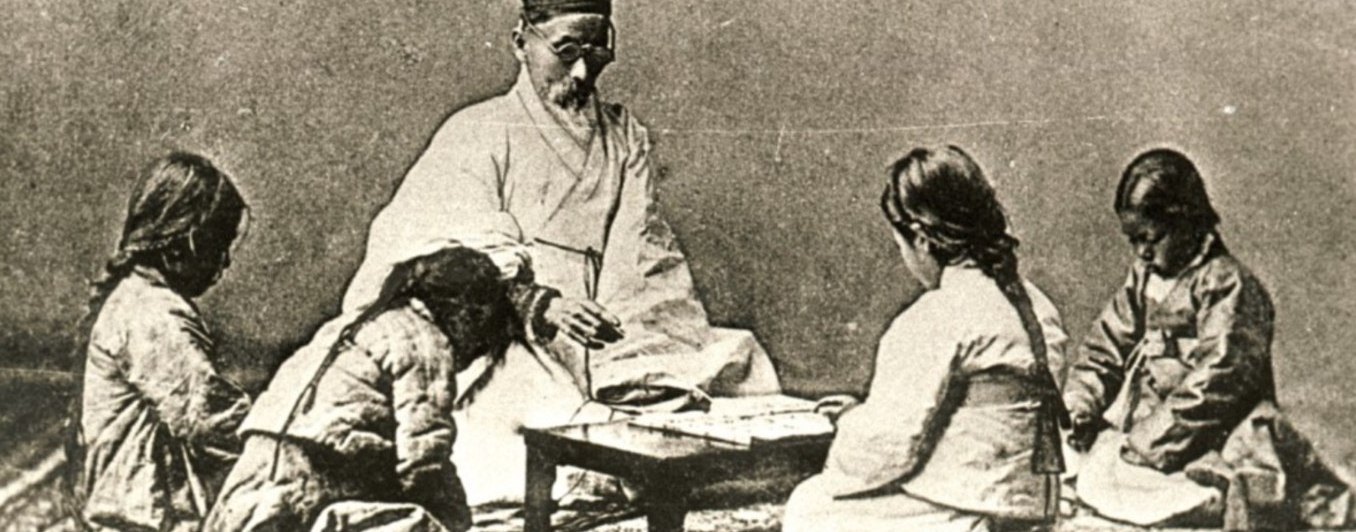
1 of 3
Historians don’t know exactly when literacy appeared in Japan. The traditional dating is closely connected with the legendary arrival of a scholar from the Korean kingdom of Paekche in 404 AD. The Nihon shoki chronicles tell us about Wani, a wise scholar who settled in Japan during the reign of Emperor Ojin. He was named the leader of scribes in Japan, with the job of working with official documents. None of his works survived. For the next century and a half, literacy was limited to a very small elite, mostly Korean and Chinese immigrants hired in the service of the early Yamato state.
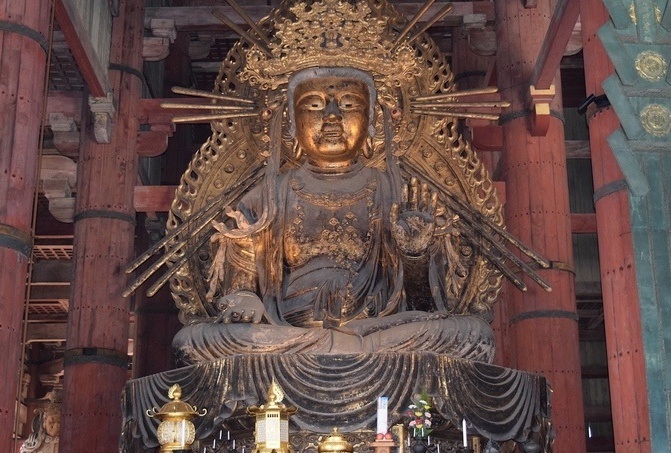
2 of 3
More and more monks and diplomats returned from China with Confucian and Buddhist texts, contributing to the rising rate of literacy amongst the ruling class of Japan. The reign of Prince Shotoku was also significant from this point of view, because it was the first that tried to promote Buddhism in all the corners of the country, passing direct written orders to provincial governors and enforcing a common mentality in the ranks of the lesser nobility. For both practical and spiritual grounds, the local nobility appreciated the skill of reading and labeled it a priority. This was a characteristic specific for East Asia because in other parts of the world literacy wasn’t considered mandatory for the ruling class.
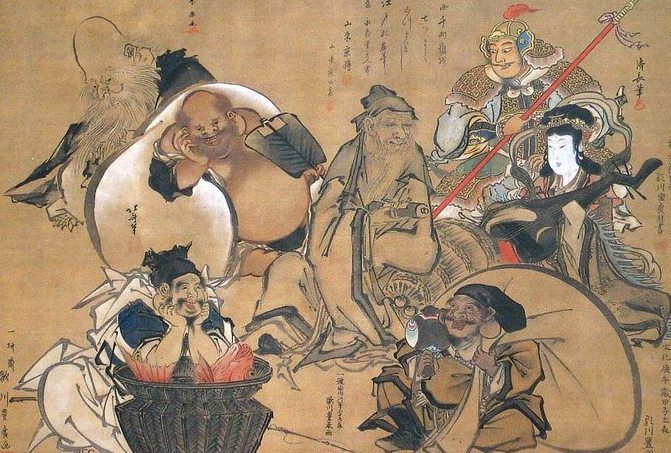
3 of 3
Another step forward was made during the Nara era, when the state was strongly centralized. Access even to low-ranking offices was facilitated only if the noble proved his ability to read, write and understand the Chinese classics. Education was the most important factor that promoted some commoners in the bureaucratic system, even though they were functionaries and merely carried out orders. It is important to note that despite several attempts to promote persons based on merit, the Japanese aristocracy imposed the principle of obtaining vital political positions via blood inheritance. In practice, the principles of governance were driven by a mixture of birth rights and the actual knowledge to rule.
- Delmer M. Brown - The Cambridge History of Japan Volume 1, Ancient Japan, Cambridge University Press, Cambridge, 1993
- Curtis Andressen - A short history of Japan from Samurai to Sony, Allen and Unwin, Canberra, 2002
- W. G. Beasley - The Japanese Experience. A short history of Japan, The Orion publishing group, London, 1999
- Kenneth Henshall - A history of Japan from Stone Age to Superpower, Palgrave Macmillan, New Zealand, 2012
- Donald Denoon, Mark Hudson, Gavan McCormack, Tessa Morris-Suzuki - Multicultural Japan: Palaeolithic to Postmodern, Cambridge University Press, New York, 2001
- W. Scott Morton, J. Kenneth Olenik, Charlton Lewis - Japan Its History and Culture: 4th Edition, McGraw-Hill Publishing, New York, 2005
- Patricia Buckley Ebrey, Anne Walthall, James Palais - East Asia. A Cultural, Social, and Political History, Houghton Mifflin Publishing, New York, 2009
- George Sansom - A History of Japan to 1334, Charles E. Tuttle Publishing, Tokyo, 1958
- Karl F. Friday - Japan Emerging: Premodern History to 1850, Westview Press, Colorado, 2012
- R.H.P. Mason & J.G. Caiger - A History of Japan Revised Edition, Tuttle Publishing, Singapore, 1997
- P. C. Swann- The Art of Japan From the Jomon to the Tokugawa Period, Greystone Press, New York, 1966
- Noritake Tsuda - A history of Japanese Art. From Prehistory to the Taisho Period, Tuttle Publishing, Tokyo, 2009
- Penelope Mason - History of Japanese Art. Second Edition, Pearson Prentice Hall, New Jersey, 2005
- Donald Keene - Seeds in the Heart. Japanese Literature from Earliest Times to the Late Sixteenth Century, Henry Holt and Company Publishing, New York, 1993
- Shuichi Kato - A history of Japanese literature. From the Man'yōshū to Modern times, Japan Library Publishing, Japan, 1997
- Wiebke Denecke - Classical World Literatures. Sino-Japanese and Greco-Roman Comparisons, Oxford University Press, New York, 2014
- Haruo Shirane - Traditional Japanese Literature. An Anthology, Beginnings to 1600, Columbia University Press, United States, 2007
- Haruo Shirane, Tomi Suzuki, David Lurie - The Cambridge History of Japanese Literature, Cambridge University Press, Cambridge, 2016
- John Dougill - Japan’s World Heritage Sites. Unique Culture, Unique Nature, Tuttle Publishing, Tokyo, 2014
- William Wayne Farris - Japan to 1600: A Social and Economic History, University of Hawaii Press, Honolulu, 2009
- William Wayne Farris - Sacred Texts and Buried Treasures Issues in the Historical Archaeology of Ancient Japan, University of Hawaii Press, Honolulu, 1998
- William Wayne Farris - Trade, Money, and Merchants in Nara Japan, Monumenta Nipponica, Vol. 53, No. 3 (Autumn, 1998), pp. 303-334
- Herman Ooms - Imperial Politics and Symbolics in Ancient Japan. The Tenmu Dynasty: 650-800, University of Hawaii Press, Honolulu, 2009
- Bender Ross - Performative Loci of the Imperial Edicts in Nara Japan: 749-70, Oral Tradition, volume 24, number 1, pp. 249-268, 2009.
- Bender Ross - The Hachiman Cult and the Dokyo Incident, Monumenta Nipponica, vol. 34, number 2, pp. 125-153, 1979
- Bender Ross - Changing the Calendar. Royal Political Theology and the Suppression of the Tachibana Naramaro Conspiracy of 757, Japanese Journal of Religious Studies, vol. 37, number 2, pp. 223–245, 2010
- Jean-Pascal Bassino and Masanori Takashima - Paying the Price for Spiritual Enlightenment. Tax Pressure and Living Standards in Kofun and Asuka-Nara Japan (ca. 300-794 AD), Economic History Society Conference, University of Warwick, pp. 1-26, 2013
- Hennessey, J. L. (2015). Discourses of the Heian Era and National Identity Formation in Contemporary Japan. (Working papers in contemporary Asian studies; No. 43). Centre for East and South-East Asian Studies, Lund University





